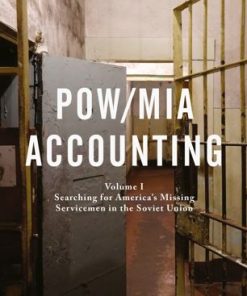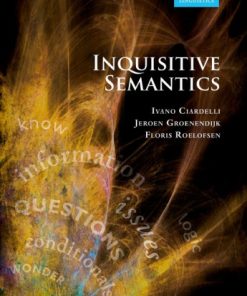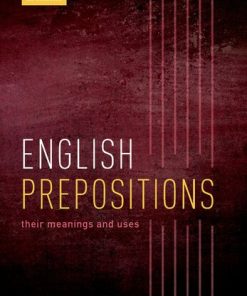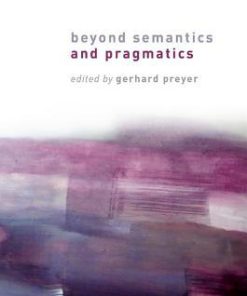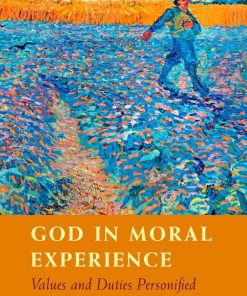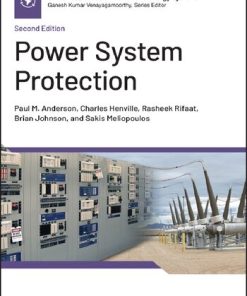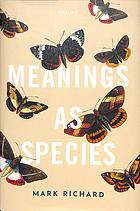(EBOOK PDF)Conjoining Meanings Semantics Without Truth Values 1st edition by Paul Pietroski 9780192540898 0192540890 full chapters
$50.00 Original price was: $50.00.$25.00Current price is: $25.00.
Conjoining Meanings Semantics Without Truth Values 1st edition by Paul Pietroski – Ebook PDF Instant Download/Delivery: 9780192540898, 0192540890
Full download Conjoining Meanings Semantics Without Truth Values 1st edition after payment
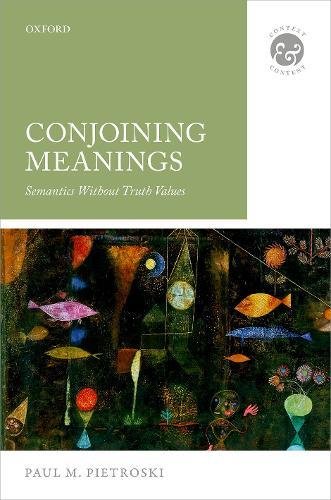
Product details:
• ISBN 10:0192540890
• ISBN 13:9780192540898
• Author:Paul Pietroski
Conjoining Meanings
Semantics Without Truth Values
Humans naturally acquire languages that connect meanings with pronunciations. Paul M. Pietroski presents an account of these distinctive languages as generative procedures that respect substantive constraints. Children acquire meaningful lexical items that can be combined, in certain ways, to form meaningful complex expressions. This raises questions about what meanings are, how they can be combined, and what kinds of meanings lexical items can have. According to Pietroski, meanings are neither concepts nor extensions, and sentences do not have truth conditions. He argues that meanings are composable instructions for how to access and assemble concepts of a special sort. More specifically, phrasal meanings are instructions for how to build monadic concepts (a.k.a. mental predicates) that are massively conjunctive, while lexical meanings are instructions for how to fetch concepts that are monadic or dyadic. This allows for polysemy, since a lexical item can be linked to an address that is shared by a family of fetchable concepts. But the posited combinatorial operations are limited and limiting. They impose severe restrictions on which concepts can be fetched for purposes of semantic composition. Correspondingly, Pietroski argues that in lexicalization, available representations are often used to introduce concepts that can be combined via the relevant operations.
Conjoining Meanings Semantics Without Truth Values 1st Table of contents:
Chapter zero: Overture
1. Human linguistic meanings
1.1 Distinctively composable
1.2 Pronounceable instructions
2. Meanings are not concepts
2.1 Concepts: Symbols vs. contents
2.2 One meaning, a family of concepts
2.3 Other kinds of conceptual equivocality
3. Meanings are not extensions
3.1 Coextensive meanings
3.2 Metaphysical detour: Outlandish worlds don’t help
3..3 Polysemy redux
3.4 Communication without extensional equivalence
3.5 Meanings, natural kinds, and hard water
4. Meanings as modest Begriffsplans
4.1 Instructions that compose
4.2 A monadic basis
4.3 Modest relations
4.4 Idealizations idealize
4.5 Summarizing the introduction
Chapter one: Locating meanings
1. Unbounded yet restricted
1.1 Constrained homophony
1.2 Lexical limitations and combinatorial constraints
1.3 Composable instructions vs. specifiable values
1.4 Revealing paraphrase
2. Procedure matters
2.1 ‘I’ before ‘E’ especially after ‘Ch’
2.2 An extensional alternative
2.3 Lewisian grammars: ‘E’ before ‘I’
3. Looking ahead: What’s truth got to do with it?
3.1 A truthy conjecture
3.2 A more daring conjecture
3.3 A very bold conjecture
3.4 Meanings: Neither extensions nor representations of extensions
Chapter two: Introducing concepts
1. Representation and constituency
1.1 Thinking about things
1.2 Productive atoms
2. An old typology
2.1 Sentences, subjects, and predicates
2.2 Predicates, conjunction, and reduction
2.3 Predicates and relations
3. Composition by adicity
3.1 Thoughts, saturaters, and unsaturateds
3.2 Encoding polyadicity
3.3 Analysis, polyadicity, and junction
4. Add a little dyadicity
4.1 Very limited conjunction
4.2 Fetch, join, repeat
5. Flavors of conjunction
5.1 Propositions and predicates
5.2 Syncategorematic conjunction
5.3 Minimal polyadicity (again)
5.4 Following instructions
Chapter three: Invention and satisfaction
1. You can’t always get what you want
1.1 Functions and unsaturateds
1.2 Thinking of nothing
1.3 Thinking of something and everything
1.4 Thinking of numbers
1.5 Up the hierarchy
2. Tarski’s satisfaction
2.1 A simple mentalese
2.2 Interpreting complexity via sequences
2.3 Quantification via sequences
2.4 Semantic recursion without semantic composition
3. Supplementing PL: Taking Tarski to Church
3.1 Truth values, entities, and functions as denotations
3.2 Lambdas and quantification over sequences
3.3 Frege in Church: Polyadicity and applying functions
3.4 Functions and quantification
4. Summary and transition
Chapter four: Truth or understanding
1. Revisiting the bold conjecture
1.1 Truth theories for slangs
1.2 Truth theories as meaning theories
1.3 Derivability
2. Lies, damned lies, and semantics
2.1 The problem, first pass
2.2 Complicating complicates
2.3 Sequence relativity and context sensitivity
3. Back to troublemakers
3.1 Procedure matters
3.2 Last refuge?
3.3 A moral
Chapter five: Events and framing
1. Overview: Reporting what happened
1.1 Not enough events
1.2 Deeper waters
1.3 Asymmetric representations without asymmetric representeds
1.4 Framing a conclusion: Form vs. ontology
2. Getting framed
2.1 Warm up effects
2.2 Deep framing
3. The uncomfortable event position
3.1 Compositionally indispensable
3.2 Ontologically problematic
4. Trying to restore comfort
4.1 Distinguish but relate
5. Schein’s resolutions
5.1 Enriching forms
5.2 Adding contents to meanings
Chapter six: Massively monadic, potentially plural
1. Review and foreshadowing
1.1 Junctions without variables
1.2 Introducing vs. labeling
2. Four generalizations
2.1 Proper nouns are not denoters
2.2 Flexibility is normal
2.3 Never three or more
2.4 Limited relations
2.5 Uncertainty about adicity
3. Mismatches revisited
3.1 Denoting concepts and proper nouns
3.2 Supradyadic concepts
3.3 Dyadic concepts, round one
3.4 Dyadic concepts, round two
3.5 Idiosyncracies and meanings
3.6 Encoding idiosyncracies: SCANs, LANs, and POSSEs
4. Number neutrality
4.1 Typology and flexibility again
4.2 Two ways of interpreting capitalized variables
4.3 Mass without Church
4.4 Summary
Chapter seven: Minimal semantic instructions
1. Introduction
1.1 Simple constructions
1.2 Composable meanings
1.3 A methodological strategy
2. Elementary phrases
2.1 Building simple expressions
2.2 Specifying simple instructions: Round one
2.3 Specifying simple instructions: Round two
2.4 Adding external arguments
2.5 Adverbials and perceptuals
3. Tense, sentences, and relative clauses
3.1 Adding tense
3.2 T-concepts
3.3 Indices
3.4 Abstraction
3.5 Adding negation to tense
4. Quantification
4.1 Quantifiers as predicates
4.2 Building the plural predicates
4.3 Restriction and conservativity
4.4 Encoding the constraint and embracing displacement
5. So many expressions, so little time
Chapter eight: Reprise
1. Slangs, concepts, and instructions
2. Meaning, truth, and goals
3. The alternative
4. Meaning before truth
References
General Index
Index of names
People also search for Conjoining Meanings Semantics Without Truth Values 1st:
conjoining meanings
pietroski conjoining meanings
what is a conjoining word
what does conjoin mean
definition of conjoin
Tags:
Conjoining Meanings,Semantics Without Truth,Paul Pietroski
You may also like…
Politics & Philosophy
dictionaries & phrasebooks
dictionaries & phrasebooks
English Prepositions Their Meanings and Uses 1st edition by Dixon 0192639293 9780192639295
dictionaries & phrasebooks
Uncategorized
No Truth Without Beauty: God, the Qur’an, and Women’s Rights 1st ed. 2022 Edition El-Ali
Engineering - Electrical & Electronic Engineering




